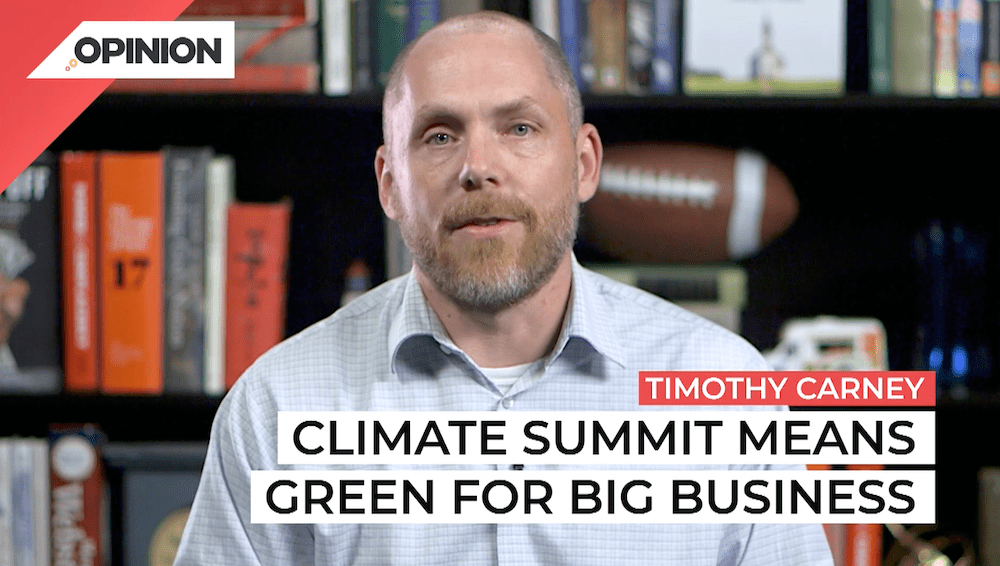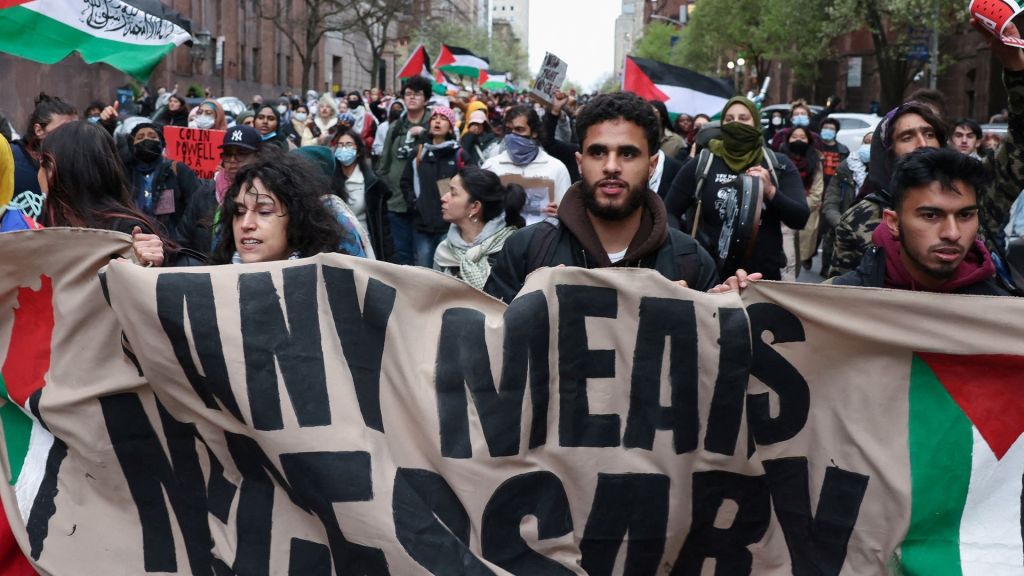
Commentary
-
Our commentary partners will help you reach your own conclusions on complex topics.
What does the color green mean to you?
In very green Scotland, governments from all over the world are meeting for their periodic climate summit.
There will be plenty of talk of green energy, green finance, green building—and all of it will mean green for big, politically connected companies in Europe and the U.S.
The United Nations is hosting a climate meeting in Glasgow starting on October 31. It’s called “COP-26,” as it’s the 26th annual “Conference of the Parties” to the UN’s climate-change framework.
The countries are trying to implement the Paris Accords, which were agreements among nations to reduce emissions and otherwise fight climate change and its effects.
One topic that will get extra attention this year is what’s called “Climate Finance.” In short, it’s rich countries paying poorer countries to deal with emissions or climate change.
There’s some sense here. Green energy, such as solar and wind energy, is more expensive and less reliable than fossil-fuel energy such as natural gas and coal.
The U.S., Canada, Australia, and much of Western Europe got rich in part by using these God-given resources to get cheap and reliable energy that allows industries and communities to flourish.
Now that poor countries are starting to rise out of poverty and develop a middle class and more industries, are the rich countries really going to bar them from using the same affordable energy and instead force luxury green energy on them?
Or will rich countries simply let poor countries do what they want?
In that case, the climate fight would be a story of coal-fired plants moving from Michigan and Bavaria to Mongolia and Botswana. This will hardly reduce pollution or greenhouse gas emissions.
So a deal was cut: Wealthy countries would pay the poor countries to go green.
The wealthy countries last decade pledged to give a hundred billion dollars a year in “climate finance” to fund poor countries’ climate mitigation and adaptation.
Rich countries didn’t quite meet their hundred-billion goal in 2020, but they did pump more than 80 billion into “climate finance” in poor countries.
We can expect in Glasgow, governments to agree to increase that hundred-billion-a-year goal.
These payments function in part as bribes, to get the poor countries—many of whom face far more pressing issues—enthusiastically on board with the rich countries’ whole climate fight.
But the billions and billions in global “climate finance” ought to be seen mostly as payoffs to politically connected companies in rich countries.
Here’s what “climate finance” means in practice: The government of, say, Germany, send money to a foreign government on the condition that foreign country hires a German company to install wind farms or solar panels. Or rich governments subsidize poor countries’ purchase of electric cars.
The Big Banks get in on this, too. Often “climate finance” means a rich government guarantees a loan made by a Big Bank to a poor country buying something like energy-efficient building materials. For the Big Banks, this is free money — if the poor country can’t pay back the loan, the rich country’s taxpayers foot the bill.
It’s the same as the United States’ domestic climate-change efforts.
Look at Joe Biden’s proposals: massive subsidies for rich people to buy electric cars — this is effectively transferring tax dollars to Tesla.
Biden’s main new climate proposal is a $150 billion dollar boondoggle called the Clean Electricity Performance Program, which mostly amounts to paying utilities for increasing their investment in wind and solar — which in turn is another subsidy from U.S. taxpayers to the companies that build and install wind and solar.
Often, when you follow the money, you realize how these environmentalist programs don’t actually help the planet that much.
For instance, rules forcing American automakers to make their cars lighter weight, resulted in them replacing steel with aluminum.
Guess who loved this proposal: Alcoa, the world’s largest aluminum company.
So when you see billions pledged in global climate finance, or an expensive Biden green energy plan, remember that Green is the color of money.
-
Subsidizing demand won’t fix real problems
The Biden administration recently announced an initiative to cap child care copay expenses for approximately 100,000 low-income working families in the United States. Instead of paying set fees, those families will pay 7% of whatever their total income is as a copay for the government-subsidized daycare program. The program also hopes to fully cover all…
-
America’s baby bust portends tough times ahead
In 2007, Americans welcomed approximately 4.3 million babies. But following a decline in birth rates during the Great Recession, birth rates have not recovered. Over the past 15 years, the number of U.S. births has decreased annually, with the most recent 12-month period on record indicating only 3.6 million babies born. Straight Arrow News contributor…
-
Inflation is still too high and Biden is still to blame
Democrats are busy celebrating a consistently strong economy under President Biden, citing shocking GDP growth and record-low unemployment. Republicans are responding to the celebration with concerns about rising living costs, housing unaffordability, and continuing inflation. Straight Arrow News contributor Tim Carney points out that many Americans feel left behind by “Bidenomics” and argues that they…
-
College just got much pricier for American families
American colleges and universities are among the very best in the world. They are also notoriously expensive, with many graduates working for decades to pay back their college loans. But for many new students and parents hoping to help their children pay for college, tuition just became even more expensive, thanks to a new federal…
-
Hunter Biden’s tax evasion charges not the worst part of controversy
On Dec. 7, Hunter Biden was indicted on nine tax charges in California, relating to over $1.4 million in taxes owed between 2016 and 2019. While the back taxes have been settled, a potential conviction could result in a maximum 17-year prison sentence for the president’s son. On Dec. 13, House Republicans voted to formalize…
Latest Opinions
-
 Getty Images
Getty Images
RFK Jr. wants government budget on blockchain for accountability
-
 Getty Images
Getty Images
Gaza authorities claim mass graves found; Israel denies accusations
-
 Getty Images
Getty Images
Trump could lose Secret Service protection if found guilty
-
 Getty Images
Getty Images
AI may save lives with new weather forecasting technology
-
 Straight Arrow News
Straight Arrow News
Australia seeks global ban on violent video posted on X; Musk pushes back
Popular Opinions
-
In addition to the facts, we believe it’s vital to hear perspectives from all sides of the political spectrum.


